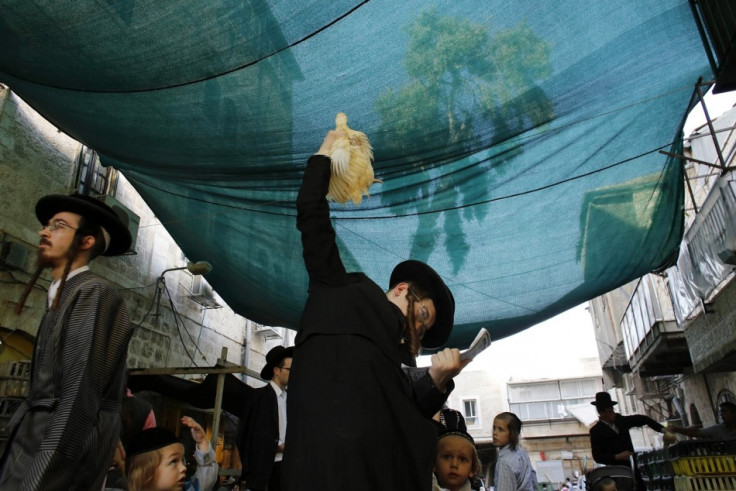Yom Kippur 2014: 8 Customs Jews Must Keep Before and During the Day of Atonement

Yom Kippur, the most important religious event in the Jewish calendar, will take place on 5 October this year.
Known as the Day of Atonement, Jewish people spend 25 hours atoning for the sins of the past year.
It is thought to be the last chance to change God's judgment of their deeds over the last 12 months and, as a result, is a day of worship, reflection and repentance.
There are a number of customs involved in Yom Kippur, with fasting and praying the most well-known. However, there are a number of other traditions Jewish people must undertake during the Day of Atonement.
Kapparot
The night before Yom Kippur, the ritual of Kaparot takes place.A live chicken or bag of coins is swung by a person over their head three times, transferring their sins to the creature or object. The chicken is then slaughtered and donated to the poor for a pre-fasting meal.
Giving to charity
While not mandatory, it is considered a religious obligation to make a charitable donation the day before Yom Kippur.
Four prayer services
Unlike a normal day, where there are three prayer services, there are five on Yom Kippur: Ma'ariv, Shacharit, Musaf, Mincha and Ne'ilah. Services include private and public confessions.
Fasting
All healthy adults, including teenagers, are expected to fast. Greetings are often focused on food. Some common greetings include "well over the fast" or "Tsom Kal", meaning an easy fast. Fasting begins before sunset on the evening before Yom Kippur and ends after nightfall on the Day of Atonement.
No work, washing or sex
Jewish people cannot perform any work on Yom Kippur. Talmud – a central text of Judaism – also specifies people cannot wash or anoint their bodies with cosmetics or deodorant. Sex is prohibited, too.
No leather shoes
Jewish people must not wear leather shoes on Yom Kippur, meaning many wear trainers or canvas footwear to go to the synagogue. This is because leather shoes are considered a luxury.
Ne'ilah
Ne'ilah is the concluding service of Yom Kippur. It normally lasts about an hour, during which the ark – where the scrolls of the Torah are kept – are left open throughout. This is considered the last chance to atone for sins before the end of the holiday and is sometimes referred to as the closing of the gates.
Horn blowing
One of the main observances of the holiday is blowing the shofar, or ram's horn. It is thought to be symbolic of the trumpet blast of the call to repentance. The shofar is blown at the end of Ne'ilah.
© Copyright IBTimes 2025. All rights reserved.






















